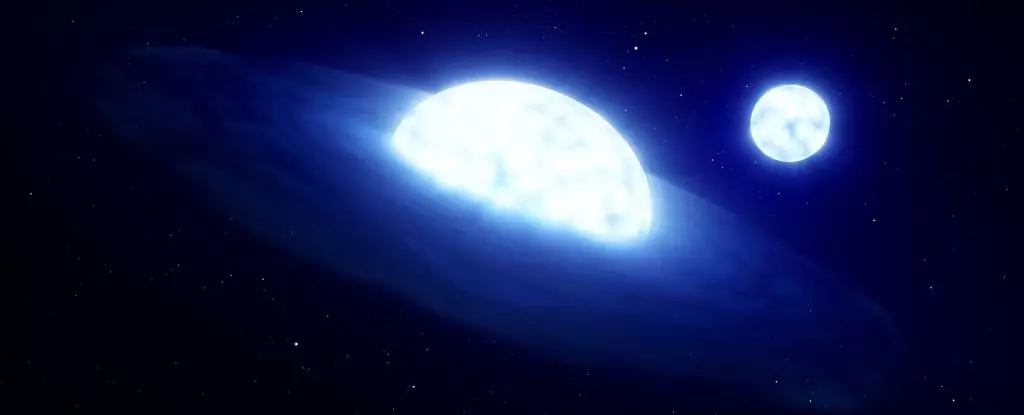The vast expanse of space never ceases to amaze us with its enigmatic wonders. Among its countless mysteries, an unexpected phenomenon has emerged: the existence of stellar vampires. These astronomical creatures, known as Be stars, are characterized by their rapid rotation and the presence of Balmer emission, emitted by hydrogen atoms. However, their elusive companions have puzzled astronomers for years. Recent research suggests that these companions might not be missing after all, but rather hiding in the shadows of their more massive counterparts. As we delve into the depths of this celestial realm, we uncover the hidden truths of our galaxy’s triple-star systems.
Binary systems have long fascinated astronomers, but the discovery of trinary systems challenges our understanding of stellar evolution. Driven by the curiosity of these complex systems, researchers at the University of Leeds embarked on a mission to shed light on the missing companions of Be stars. By closely observing the motion of these stars across the night sky over extended periods, a technique called astrometry, they hoped to uncover the secrets hiding within the cosmic ballet.
As the data started pouring in, the researchers found themselves confronted with a startling revelation. Initially, it appeared that Be stars had a lower rate of companions compared to their B star counterparts. This unexpected finding puzzled the scientists, contradicting their initial expectations. Undeterred, they decided to explore a different set of data, focusing on companion stars with wider separations.
The second analysis yielded intriguing results. It turns out that Be stars and B stars have a similar rate of companions at greater orbital distances. This discovery indicates that gravitational interactions between three stars could push one of the stars closer to the Be star, setting the stage for an unceremonious feast. These hidden companions, if devoured by their larger counterparts, may become too small, low-mass, and faint to detect using current observational techniques. Imagine attempting to spot the faint glow of a microscopic LED next to a blinding searchlight from a distance—truly a daunting task.
The revelation of triple-star systems lurking in our galaxy carries profound implications for our understanding of stellar formation, growth, and evolution. These systems, acting as the precursors to neutron stars and black holes, accumulate enough mass during their hydrogen-burning lifetime for a core collapse. The collapse gives birth to these incredibly dense and massive cosmic entities. This newfound complexity in stellar evolution challenges the conventional view of binaries and redirects our attention to the unexplored realm of triple stars.
As we embark on this journey of discovery, astrophysicists like René Oudmaijer from the University of Leeds emphasize the crucial role of triple stars in unravelling the intricate tapestry of our universe. Over the past decade, astronomers have come to recognize the significance of binarity in stellar evolution. Now, the focus is shifting towards embracing the complexity of triple-star systems. These newfound celestial configurations force us to reevaluate our understanding, pushing the boundaries of our knowledge further than ever before.
The enigmatic world of Be stars and their elusive companions continues to captivate astronomers around the globe. What was once a perplexing mystery now reveals a tapestry of interconnected stellar relationships. The discovery of triple-star systems lurking in the vast cosmic expanse challenges our preconceived notions and propels us towards a new era of understanding. As we peer into the night sky, we are reminded of the awe-inspiring complexity that permeates our universe and the eternal quest to unravel its secrets. The stellar vampires, though elusive, offer a glimpse into the hidden depths of space, beckoning us to embark on an everlasting pursuit of knowledge.


Leave a Reply